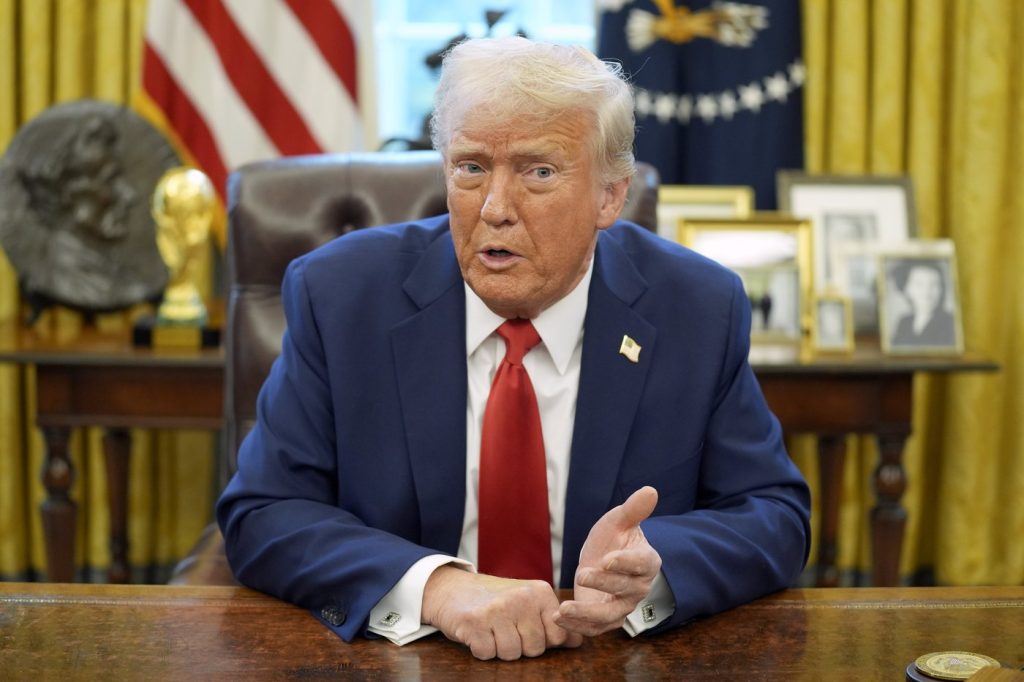In justifying his latest executive order imposing tariffs on Canadian goods, U.S. President Donald Trump cited concerns over trade imbalances, illegal immigration, and fentanyl trafficking, linking them to national security risks. However, a detailed analysis of available data contradicts many of these claims, raising questions about the rationale behind the proposed tariffs.
Although Trump agreed on Monday to pause the tariffs for 30 days in exchange for Canada and Mexico bolstering border security, his administration’s fact sheet continues to push unverified statistics and misleading narratives about Canada’s role in U.S. economic and security challenges.
Trump has repeatedly claimed that the U.S. is losing $200 billion annually to Canada and that American tariffs are necessary to counteract massive trade imbalances. However, an independent TD Economics analysis paints a different picture.
Canada remains the largest export market for U.S. goods, and the bilateral trade deficit is among the smallest of any U.S. trading partner.
- In 2024, the U.S. trade deficit with Canada was projected at approximately $45 billion USD ($65 billion CAD), significantly lower than Trump’s claimed $200 billion.
- When accounting for services trade, in which the U.S. has a surplus, Canada’s overall trade surplus with the U.S. is further reduced to $85 billion CAD, representing just 2.8% of Canada’s GDP.
- Trump’s characterization of this trade balance as a “subsidy” is incorrect, as TD Economics notes: “A trade deficit is not a subsidy; Americans receive goods and services in return for their spending.”
Trump’s fact sheet claims that over 10 million illegal immigrants attempted to enter the U.S. under President Joe Biden’s administration, including an increasing number at the northern border with Canada.
While U.S. Border Patrol data shows that arrests at the U.S.-Canada border rose to 23,721 in 2024, this remains a fraction of the 1.5 million apprehensions recorded at the U.S.-Mexico border. Furthermore, crossings at the northern border have steadily declined since their peak in mid-2024.
One of the most contentious claims in Trump’s executive order is the alleged role of Canada in the U.S. fentanyl crisis.
The fact sheet states that 21,000 pounds of fentanyl were seized at U.S. borders in the last fiscal year, but the overwhelming majority of those seizures occurred at the southern border with Mexico. Only 43 pounds of fentanyl were seized at the entire northern border with Canada.
A December 2024 report from the U.S. Congressional Research Service confirmed that most illicit fentanyl destined for the U.S. is manufactured in Mexico using precursors from China—not Canada.
Even Canada’s own Financial Transactions and Reports Analysis Centre (Fintrac) noted in a January alert that while there has been an increase in domestic fentanyl production, “there is little to no evidence” that Canadian-made fentanyl is a growing threat to the U.S.
Contrary to Trump’s assertion that Canada has failed to coordinate with U.S. law enforcement, Ottawa has made significant efforts to combat cross-border crime and fentanyl trafficking.
- The RCMP and local police forces have dismantled 44 clandestine drug labs since 2018, preventing millions of potentially deadly doses from reaching the public.
- Canada has actively participated in the North American Drug Dialogue, a trilateral effort with Mexico and the U.S. to address drug trafficking.
- In response to Trump’s threatened tariffs, Canada recently announced a $1.3-billion investment in border security, which includes:
- A round-the-clock aerial intelligence task force using helicopters, drones, and surveillance towers.
- The creation of a North American joint strike force to target organized crime groups operating across borders.
- Deployment of AI-driven chemical detection systems and canine teams to enhance drug interception efforts.
Trump’s tariff justification relies on exaggerated statistics and misleading claims, particularly regarding trade deficits, immigration, and fentanyl trafficking. Independent data, including reports from TD Economics, the U.S. Congressional Research Service, and Canadian law enforcement, indicate that:
- Canada is not a major driver of the U.S. trade deficit—if anything, it remains a critical economic partner.
- The northern border is not a primary source of illegal immigration compared to the southern border.
- Fentanyl trafficking is overwhelmingly a Mexico-China issue, with only minor connections to Canada.
Despite these facts, Trump’s 30-day tariff delay leaves open the possibility of future economic pressure on Canada. As Ottawa continues to engage in diplomatic and security efforts, the validity of Trump’s claims remains under intense scrutiny.

